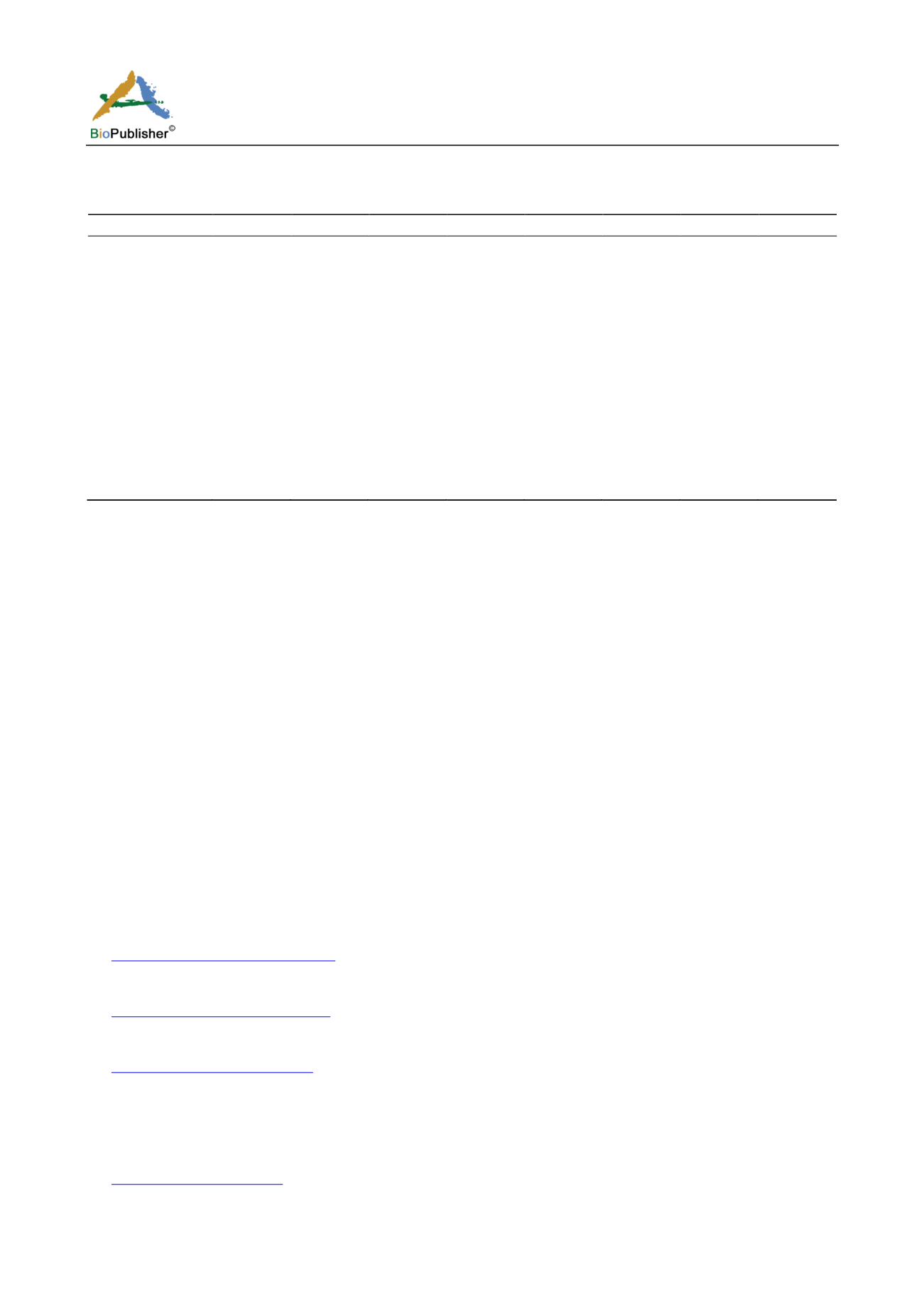
International Journal of Marine Science, 2017, Vol.7, No.13, 114-124
122
moderately pollution with Cu, Zn, Cd, Co, Fe and strongly polluted with Pb.
Table 8 Geo-accumulation index of heavy metals from different locations on the Red Sea
Locations
Cu
Zn
Pb
Cd
Fe
Mn
Ni
Co
G1
-0.08
-0.07
2.86
2.43
0.23
-0.23
0.00
1.60
G2
-0.25
-0.21
3.13
2.49
-0.12
-0.42
-0.12
1.59
G3
-0.07
-0.53
3.35
2.73
-0.44
-0.36
-0.39
1.61
H1
0.55
0.40
3.34
2.58
0.88
0.52
0.24
1.72
H2
2.02
2.27
4.08
2.86
1.29
0.30
0.68
1.67
H3
0.78
0.15
3.46
2.39
0.61
-0.10
-0.12
1.67
S1
1.50
1.03
3.65
2.53
2.00
1.12
0.68
2.08
S2
0.38
0.96
3.38
2.84
1.87
1.43
0.53
1.63
S3
0.12
0.37
2.78
2.15
2.10
1.62
0.55
2.09
Q1
-0.08
-0.15
3.45
1.66
0.22
0.09
0.21
1.68
Q2
0.72
1.29
3.61
3.08
1.97
1.31
1.29
2.18
Q3
-0.02
0.08
2.90
2.28
1.38
0.73
0.57
1.75
Average
0.46
0.47
3.33
2.50
1.00
0.50
0.34
1.77
3 Conclusions
Studying the concentrations of heavy metals in coastal sediments of the Red Sea showed that, intensive maritime
activities in the inter-harbour zone and marinas had significant effects on the levels of Cu, Zn and Pb in sediments.
The concentrations of Fe and Mn recorded highest values in Safaga City which was originated from terrigenous
sediments. Lower levels of heavy metals were observed in Ras Gharib City indicating inferior effect of oil
industry on metal contamination. The recorded levels of heavy metals in present study were higher than the
background values in sediments. However average metal values of current study were lower than those recorded
in other tropical regions around the world. According to enrichment Factor (EF), considerable portion of Pb and
Cd are likely from anthropogenic contamination. Regarding the (I
geo
), levels of Co and Cd considered moderately
polluted sediments, while Pb revealed strong polluted sediments.
Authors’ contributions
Mohamed E.A. El-Metwally contributed to the paper by collecting samples, analyses, processing the data, and writing the manuscript.
Ahmed S. Abouhend contributed to the paper by collecting samples and analyses. Mahmoud A. Dar contributed by analyses and lab
management. Khalid M. El-Moselhy contributed by processing the data and revising the manuscript.
Acknowledgments
This work was supported by the National Institutes of Oceanography and Fisheries, Egypt.
References
Abu-Hilal A.H., and Badran M.M., 1990, Effect of pollution sources on metal concentration in sediment cores from the Gulf of Aqaba (Red Sea), Marine
Pollution Bulletin, 21: 190-197
Abu-Hilal A., Badran M., and Vaugelas J.D., 1988, Distribution of trace elements in
callichirus laurae
burrows and nearby sediments in the Gulf of Aqaba,
Jordan (Red Sea), Marine Environmental Research, 25: 233–248
Amin B, Ismail A., Arshad A., Yap C.K., and Kamarudin M.S., 2009, Anthropogenic impacts on heavy metal concentrations in the coastal sediments of Dumai,
Indonesia, Environmental Monitoring and Assessment, 148: 291-305
PMid:18274874
Bruckner A.W., Alnazry H.H., and Faisal M., 2011, A paradigm shift for fisheries management to enhance recovery, resilience, and sustainability of coral reef
ecosystem in the Red Sea, Sustainable fisheries: Multi- Level Approach to Global problems, 85-111
Chen Z., Liu P., Xu S., Liu L., Yu J., and Yu L., 2001, Spatial distribution and accumulation of heavy metals in tidal flat sediments of Shanghai coastal zone,
Science in China Series B: Chemistry, 44: 197-208


